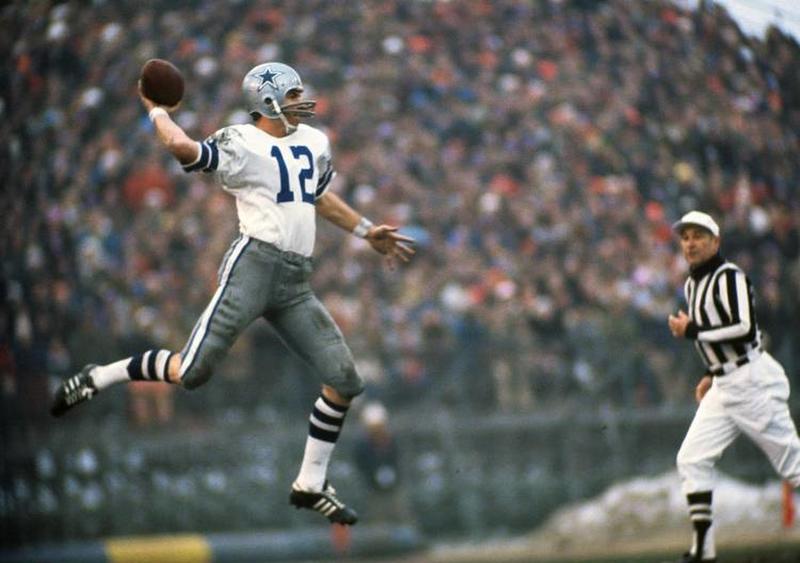
Roger Staubach's name flies under the radar when it comes to speaking on the greatest quarterbacks of all-time. Yet, Staubach was a crucial contributor to "America's Team's" success throughout the '70s. While his tenure in the NFL was considerably short, he left a lasting impact on the league and the Dallas Cowboys organization that will be memorialized forever. Hailing from Cincinnati, Ohio Staubach played his college football at the United States Naval Academy from 1962 to 1964. In at quarterback for the very first time, Staubach was sacked twice and went 0-2 for -24 yards. However, Hall of Fame coach, Wayne Hardin, kept his faith and continued to play Staubach who eventually won the Heisman Trophy, the Maxwell Award, and the Walter Camp Memorial Trophy his junior year after leading the Navy Midshipmen to a 9-1 record in 1963. Following his tenure at the Academy, Staubach joined the military and even did a tour in Vietnam.
Roger Staubach was selected 129th overall in the tenth round of the 1964 NFL Draft by the Dallas Cowboys as a 'future' pick due to Staubach's military commitment. Staubach wouldn't play a single snap of professional football until the age of 27-years-old. Staubach wouldn't become the Cowboys starting quarterback until 1971 where he would lead the Texas-based football franchise to their first-ever Super Bowl victory in Super Bowl VI against the Miami Dolphins also winning Super Bowl MVP honors for his performance as well. After suffering a severe shoulder injury and missing most of the 1972 season, Staubach would return and lead the Cowboys to three more Super Bowl appearances (X, XII, and XIII). While the Cowboys lost both Super Bowls X and XIII to the Pittsburgh Steelers, Staubach was able to help his team secure a second ring at Super Bowl XII. After eleven seasons in the NFL, Staubach retired a Cowboys legend in 1980.
For the past few years, we've been seeing more and more food halls dominate the retail industry. The craze has swept Los Angeles and New York by storm and is now making its way to Miami. In Magic City alone, ten of these food parks have opened just recently. The mania is even set to triple in size by the year 2020.
Now more than ever, more people have been adopting a vegan lifestyle. A survey in the United Kingdom reveals that 3.5 million residents have turned vegan, while 20 percent have at least tried the concept. People are now wanting to cut down on meat, and the food industry is giving in to the demand. Even wineries have started stocking up on vegan wines.
Due to increased awareness and desire to help the environment, companies have become more committed to eco-friendly food packaging. Previously, companies didnt care much about producing a ton of waste; but now, efforts to reuse, reduce, and recycle are much more apparent. For instance, PepsiCo has committed to creating completely recyclable packaging by the year 2025.
Who would have thought that young millennials would be into rum? These barrel-aged, small-batch rums are the latest trend in booze, and now even British companies such as Essexs English Spirit are joining in. The spirit is one of the most popular and versatile forms of alcohol, whether it be sweet or strong, dark or white, neat with ice or served with coke.
Nowadays, people have become more accepting of imperfection; when it comes to fresh produce that is. Imperfect Produce is just one of the grocery delivery companies that serve physically flawed fruits and vegetables. This effort is geared toward reducing waste, and the disfigured foods are often turned into hummus, crisps, and juices.
Various Asian restaurants have been popping up recently, and Sri Lankan cuisine is slowly making its way to the western palate. Sri Lankan dishes such as kottu roti, pol sambol, coconut relish, and hoppers, are being introduced to the market, and people are loving it. Unlike before, the Sri Lankan flavor is finally being recognized as an individual cuisine, separate from Indian food.